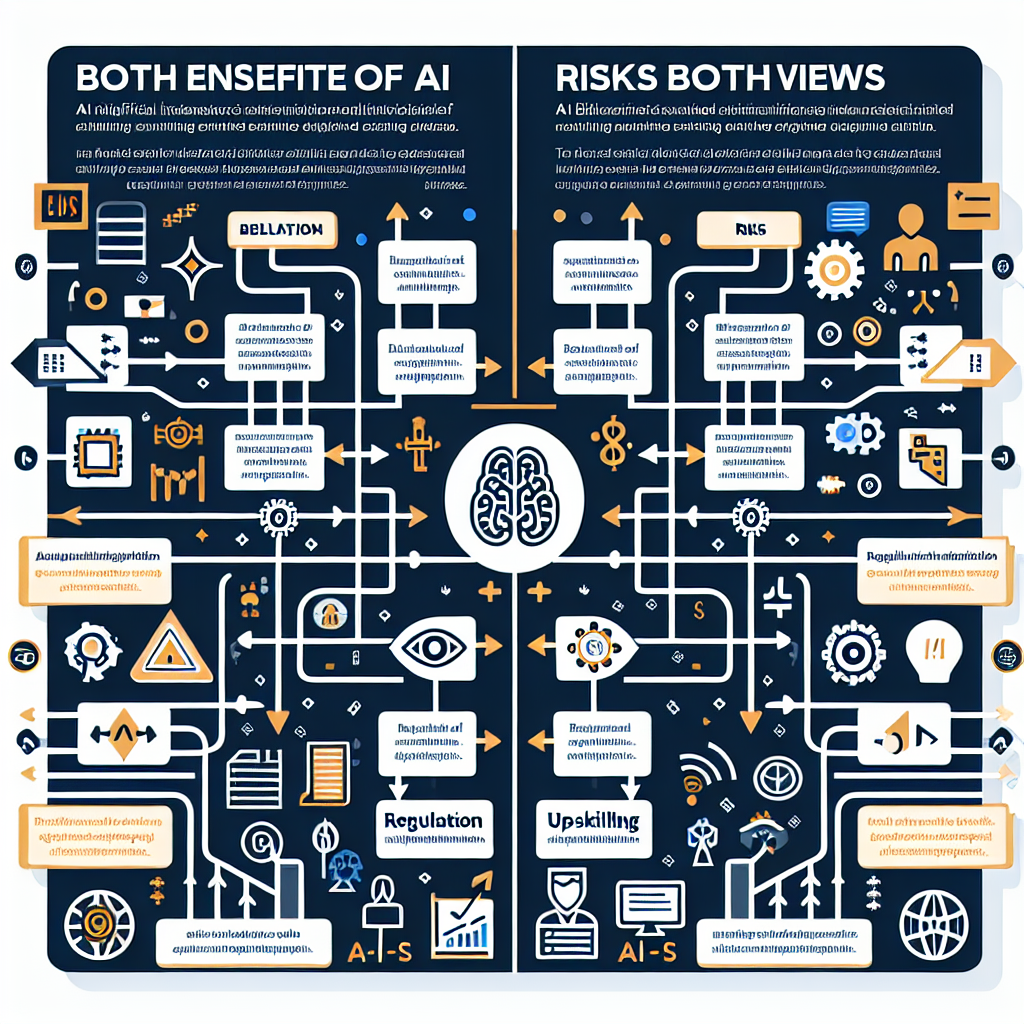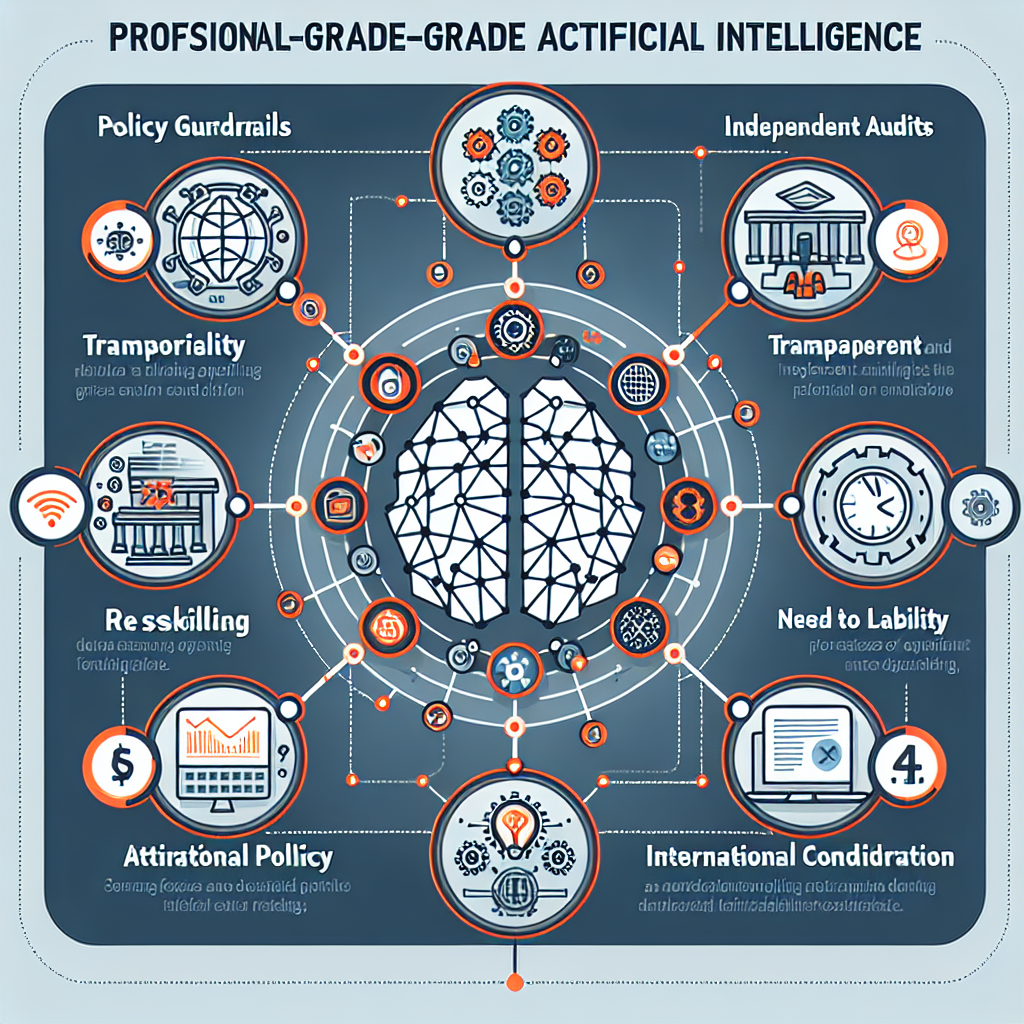Mở bài
Chủ đề “Computers Becoming More Intelligent Than Humans: Positive Or Negative Trend” bùng nổ trong vài năm gần đây khi trí tuệ nhân tạo (AI) tăng tốc. Trong IELTS Writing Task 2, chủ đề này xuất hiện thường xuyên dưới dạng Discuss both views, Positive/Negative development, hoặc Agree/Disagree. Trong bài viết này, bạn sẽ nhận được: 3 bài mẫu hoàn chỉnh (Band 8-9, Band 6.5-7, Band 5-6), bảng phân tích chấm điểm theo 4 tiêu chí chính thức, từ vựng chủ đề AI – công nghệ, cấu trúc câu điểm cao và checklist thực hành “cầm tay chỉ việc”.
Nội dung bài viết
- Mở bài
- 1. Đề Bài và Phân Tích
- 2. Bài Mẫu Band 8-9
- Phân Tích Band Điểm
- Tại Sao Bài Này Đạt Điểm Cao
- 3. Bài Mẫu Band 6.5-7
- Phân Tích Band Điểm
- So Sánh Với Bài Band 8-9
- 4. Bài Mẫu Band 5-6
- Phân Tích Band Điểm
- Học Từ Những Lỗi Sai
- Cách Cải Thiện Từ Band 6 Lên Band 7
- 5. Từ Vựng Quan Trọng
- 6. Cấu Trúc Câu Điểm Cao
- 7. Checklist Tự Đánh Giá
- Kết bài
Một số đề gần/giống với chủ đề này đã được ghi nhận:
- IELTS Liz: Many jobs in the future will be done by robots. Is this a positive or negative development? (Robots/AI – positive/negative)
- IELTS-Blog: Many jobs currently done by humans will be carried out by robots in the future. Do the advantages outweigh the disadvantages? (báo cáo bởi thí sinh)
- IELTS-Blog: Some people believe artificial intelligence will increasingly replace human workers. Discuss the advantages and disadvantages. (báo cáo bởi thí sinh)
Trong bài, tôi chọn một đề “Discuss both views” bám sát từ khóa để phân tích sâu, giúp bạn nắm trọn tư duy, dàn ý, ngôn ngữ và kỹ thuật triển khai theo chuẩn chấm IELTS.
 Computers becoming more intelligent than humans trong IELTS Writing Task 2
Computers becoming more intelligent than humans trong IELTS Writing Task 2
1. Đề Bài và Phân Tích
Computers are becoming increasingly intelligent, potentially surpassing human capabilities. Some people view this as a positive trend, while others believe it could have negative consequences. Discuss both views and give your own opinion.
Dịch đề: Máy tính ngày càng trở nên thông minh, có khả năng vượt qua năng lực của con người. Một số người cho rằng đây là xu hướng tích cực, trong khi những người khác tin rằng điều này có thể mang lại hệ quả tiêu cực. Hãy thảo luận cả hai quan điểm và đưa ra ý kiến của bạn.
Phân tích đề bài:
- Dạng câu hỏi: Discuss both views and give your opinion.
- Yêu cầu:
- Trình bày rõ 2 quan điểm: vì sao “tích cực”, vì sao “tiêu cực”.
- Nêu quan điểm cá nhân nhất quán, ủng hộ một phía hoặc cân bằng có điều kiện.
- Thuật ngữ quan trọng:
- “surpassing human capabilities”: vượt năng lực con người (có thể đề cập tác vụ trí tuệ, tốc độ, độ chính xác).
- “consequences”: hệ quả ngắn hạn, dài hạn, đạo đức, lao động, an toàn.
- Lỗi thường gặp:
- Lệch đề sang “internet/social media” thay vì “AI/máy tính thông minh”.
- Thiếu lập luận cân bằng; chỉ kể ví dụ mà không phân tích.
- Dùng từ mơ hồ (good/bad) thay vì học thuật (beneficial, detrimental, displacement, accountability).
- Cách tiếp cận:
- Mở bài: paraphrase + nêu hai phía + thesis rõ ràng.
- Thân bài 1: Lợi ích (năng suất, y tế, an toàn).
- Thân bài 2: Rủi ro (thất nghiệp, thiên kiến thuật toán, an toàn).
- Kết bài: khẳng định lập trường, đề xuất biện pháp (regulation, upskilling).
 Phân tích đề IELTS Writing Task 2 về AI và xu hướng tích cực hay tiêu cực
Phân tích đề IELTS Writing Task 2 về AI và xu hướng tích cực hay tiêu cực
2. Bài Mẫu Band 8-9
Giới thiệu: Bài Band 8-9 có luận điểm rõ ràng, phát triển ý sâu, ví dụ chọn lọc, từ vựng học thuật chính xác, câu linh hoạt và kiểm soát tốt mạch lạc.
Bài luận (khoảng 300 từ):
While the prospect of computers becoming more intelligent than humans alarms many, it also promises unprecedented gains in productivity and problem‑solving. In my view, this trajectory is largely positive provided robust governance is in place.
Proponents argue that machine intelligence can unlock breakthroughs that human cognition alone cannot. In healthcare, for instance, AI systems already detect cancers earlier than specialists by analyzing subtle patterns in scans. At scale, such capabilities translate into fewer diagnostic errors, faster drug discovery, and substantial cost savings. In high‑risk industries—aviation, mining, nuclear power—intelligent automation can reduce accidents by handling tasks that are dangerous or cognitively overwhelming. Moreover, by taking over repetitive work, advanced systems can free people to focus on creative, relational, and strategic tasks, potentially elevating the quality of human work.
Critics, however, warn of serious downsides. Rapid automation may displace workers faster than economies can retrain them, exacerbating inequality. Algorithmic systems can also encode bias, amplifying discrimination under a veneer of objectivity. At the frontier, if general‑purpose AI became misaligned with human values, the risks could be catastrophic. These are not speculative concerns; we already see narrow AI producing unfair outcomes in hiring and lending, and there is little transparency or recourse for those affected.
On balance, the benefits can outweigh the harms if we act intentionally. Governments should mandate algorithmic transparency, independent audits, and clear liability for automated decisions. Parallel investments in education and lifelong reskilling are essential to cushion workers from displacement and to ensure inclusive gains. Finally, international coordination on safety standards is needed for the most capable systems. With these guardrails, super‑human computing power can become a public good rather than a private hazard.
Phân Tích Band Điểm
| Tiêu chí | Band | Nhận xét |
|---|---|---|
| Task Response (Hoàn thành yêu cầu) | 8.5 | Trả lời đầy đủ hai phía, có quan điểm rõ ràng “positive with governance”. Lập luận đi kèm ví dụ cụ thể (y tế, an toàn công nghiệp, bias). Kết luận đề xuất giải pháp thực tiễn. |
| Coherence & Cohesion (Mạch lạc & Liên kết) | 8.0 | Mở–thân–kết rõ ràng; mỗi đoạn có câu chủ đề và phát triển hợp lý. Dùng chuyển ý “however, on balance” hiệu quả; tham chiếu mượt. |
| Lexical Resource (Từ vựng) | 8.5 | Từ vựng học thuật đa dạng: governance, misaligned, algorithmic transparency, veneer of objectivity, guardrails. Collocations tự nhiên, chính xác ngữ cảnh. |
| Grammatical Range & Accuracy (Ngữ pháp) | 8.0 | Câu phức, mệnh đề quan hệ, cụm phân từ dùng linh hoạt. Hầu như không lỗi; dấu câu và mệnh đề điều kiện chính xác. |
Tại Sao Bài Này Đạt Điểm Cao
- Thesis rõ ràng, định hướng giải pháp, không chỉ khen/chê chung chung.
- Ví dụ chọn lọc, có tính thời sự (chẩn đoán ung thư, bias trong tuyển dụng).
- Collocations học thuật chuẩn: algorithmic transparency, independent audits, inclusive gains.
- Liên kết ý logic, mỗi đoạn xử lý một mặt của vấn đề.
- Sử dụng cấu trúc điều kiện và rào chắn chính sách để “điều kiện hóa” quan điểm.
- Tránh tuyệt đối hóa; cân bằng giữa lợi ích và rủi ro.
- Kết luận hành động cụ thể, có tính khả thi.
 Giải pháp quản trị AI: minh bạch, kiểm toán, đào tạo lại lao động
Giải pháp quản trị AI: minh bạch, kiểm toán, đào tạo lại lao động
3. Bài Mẫu Band 6.5-7
Giới thiệu: Ở mức 6.5-7, luận điểm rõ, có ví dụ, nhưng phạm vi từ vựng và độ tinh tế kém hơn; vẫn mạch lạc và đúng yêu cầu.
Bài luận (khoảng 260 từ):
It is often said that computers may soon become smarter than people. Some believe this is good for society, while others worry about its dangers. I think the outcome depends on how we manage this change.
On the positive side, intelligent computers can make services faster and cheaper. For example, hospitals can use AI to read scans more quickly, which helps doctors treat patients earlier. In factories, machines do repetitive and risky tasks, so workers can avoid injuries and focus on safer jobs. In addition, when computers handle routine work, people have more time for creative projects and communication, which humans still do better.
However, there are also clear risks. If automation replaces many jobs, some workers may not find new work immediately. This can increase inequality and social stress. Another problem is that AI systems sometimes make unfair decisions because they learn from biased data. For instance, an algorithm might reject a good candidate during recruitment due to hidden bias in the training set. Finally, if we build very powerful systems without careful rules, we might lose control of them.
In my opinion, this trend can be positive if governments and companies set strong rules. We need transparency about how algorithms work, and we should audit important systems, especially in hiring, lending and healthcare. At the same time, investment in training is necessary so that people can change careers. With these steps, smarter computers are more likely to benefit everyone rather than cause harm.
Phân Tích Band Điểm
| Tiêu chí | Band | Nhận xét |
|---|---|---|
| Task Response (Hoàn thành yêu cầu) | 7.0 | Trả lời đủ hai phía và có quan điểm. Phát triển ý tương đối sâu, ví dụ phù hợp. Chưa thật sắc bén ở chiều sâu hệ quả dài hạn. |
| Coherence & Cohesion (Mạch lạc & Liên kết) | 7.0 | Cấu trúc đoạn rõ ràng, chuyển ý mượt. Liên kết logic tốt nhưng từ nối còn quen thuộc. |
| Lexical Resource (Từ vựng) | 6.5 | Từ vựng chính xác nhưng chưa đa dạng; ít collocations học thuật nâng cao. Một số diễn đạt chung chung. |
| Grammatical Range & Accuracy (Ngữ pháp) | 7.0 | Câu đơn/ghép/phức đa dạng, nhìn chung chính xác. Thiếu một vài cấu trúc nâng cao. |
So Sánh Với Bài Band 8-9
- Bài 8-9 dùng collocations và khái niệm chính sách chuyên sâu (liability, guardrails), bài 6.5-7 diễn đạt an toàn hơn.
- Phân tích 8-9 đi xa hơn hệ quả dài hạn và đề xuất khung quản trị; 6.5-7 tập trung vào ví dụ cơ bản.
- Cấu trúc câu 8-9 linh hoạt hơn (cụm phân từ, mệnh đề rút gọn), 6.5-7 ít biến hóa.
4. Bài Mẫu Band 5-6
Giới thiệu: Ở Band 5-6, ý thường lặp, ví dụ mơ hồ, từ vựng hạn chế; hay mắc lỗi mạo từ, chia thì, giới từ, từ nối.
Bài luận (khoảng 255 từ):
Many people think computers will be more intelligent than humans, and this is good, but some people think it is bad. In my opinion, it is mostly good.
First, computers can do work faster and cheaper. It save a lot of time for companies and people. For example, factories use robots to make products very quickly. This mean customers get lower prices. Also, computers do not get tired, so they can work all day and night. In the another hand, computers can help in hospitals to check disease.
However, there are some problems. Some peoples lose their jobs because machines replace them. Government should gives money to people who cannot find work. Also, computers sometimes make a mistakes, because they are programmed by humans. It is very danger if a computer make wrong decision in a airplane or in the bank.
In conclusion, computers becoming more intelligent than humans is more positive than negative because it help society to be more efficient. But we must be careful with the risk and try to control it with a good rules.
Phân Tích Band Điểm
| Tiêu chí | Band | Nhận xét |
|---|---|---|
| Task Response (Hoàn thành yêu cầu) | 5.5 | Có nêu hai phía nhưng phát triển ý mỏng, ví dụ chung chung; luận điểm cá nhân chưa được biện minh thuyết phục. |
| Coherence & Cohesion (Mạch lạc & Liên kết) | 5.5 | Có bố cục cơ bản nhưng lặp ý, từ nối sai/đơn điệu (“In the another hand”). |
| Lexical Resource (Từ vựng) | 5.5 | Từ vựng hạn chế, nhiều lặp; dùng sai collocation (“very danger”). |
| Grammatical Range & Accuracy (Ngữ pháp) | 5.0 | Lỗi mạo từ, số ít/số nhiều, chia động từ, giới từ. Câu đơn là chủ yếu. |
Học Từ Những Lỗi Sai
| Lỗi sai | Loại lỗi | Sửa lại | Giải thích |
|---|---|---|---|
| It save a lot of time | Chia động từ | It saves a lot of time | Chủ ngữ số ít “It” → động từ thêm -s ở hiện tại đơn. |
| This mean customers… | Chia động từ | This means customers… | “This” số ít → “means”. |
| In the another hand | Cụm từ nối | On the other hand | Thành ngữ cố định. Không dùng “the another”. |
| Some peoples | Danh từ số nhiều | Some people | “People” đã là số nhiều; không thêm “-s”. |
| Government should gives | Chia động từ | Government should give | Sau “should” dùng động từ nguyên mẫu không “-s”. |
| a mistakes | Mạo từ + số nhiều | a mistake / mistakes | “a” đi với danh từ số ít; “mistakes” không có “a”. |
| very danger | Từ loại | very dangerous | “Dangerous” là tính từ; “danger” là danh từ. |
| in a airplane | Mạo từ | on an airplane | “airplane” bắt đầu bằng âm nguyên âm → “an”; đi với “on” trong ngữ cảnh. |
| the bank (không cụ thể) | Mạo từ | in a bank / in banking | Nếu nói chung, không dùng “the” trừ khi xác định. |
| a good rules | Mạo từ + số nhiều | good rules / a good rule | “a” chỉ đi với số ít. |
Cách Cải Thiện Từ Band 6 Lên Band 7
- Dàn ý rõ ràng: mỗi đoạn 1 luận điểm chính + 2-3 lý do/ ví dụ cụ thể.
- Nâng từ vựng: thay “good/bad” bằng “beneficial/detrimental”; học 10 collocations chủ đề AI.
- Sửa lỗi ngữ pháp nền tảng: mạo từ, số ít/số nhiều, chia thì hiện tại đơn.
- Đa dạng cấu trúc: thêm mệnh đề quan hệ, cụm phân từ, câu điều kiện.
- Dẫn chứng sát bối cảnh Việt Nam: tự động hóa trong may mặc, logistics, fintech để tăng thuyết phục.
5. Từ Vựng Quan Trọng
| Từ/Cụm | Loại | Phiên âm | Nghĩa | Ví dụ | Collocations |
|---|---|---|---|---|---|
| algorithmic transparency | n. | /ˌælɡəˈrɪðmɪk trænˈspærənsi/ | minh bạch thuật toán | We need algorithmic transparency in hiring. | mandate/ensure/enforce algorithmic transparency |
| guardrails | n. (ẩn dụ) | /ˈɡɑːrdˌreɪlz/ | rào chắn chính sách | Proper guardrails can reduce AI risks. | policy/ethical guardrails |
| misaligned | adj. | /ˌmɪsəˈlaɪnd/ | lệch chuẩn/giá trị | A misaligned system can cause harm. | misaligned objectives/values |
| displacement | n. | /dɪsˈpleɪsmənt/ | thay thế lao động | Automation may lead to worker displacement. | job/worker displacement |
| bias | n. | /ˈbaɪəs/ | thiên kiến | Biased data produces biased results. | algorithmic/implicit bias |
| inclusive gains | n. | /ɪnˈkluːsɪv ɡeɪnz/ | lợi ích bao trùm | Policies should ensure inclusive gains. | ensure/deliver inclusive gains |
| existential risk | n. | /ˌeɡzɪˈstenʃl rɪsk/ | rủi ro tồn vong | Some worry AI poses an existential risk. | pose/mitigate existential risk |
| cost savings | n. | /kɒst ˈseɪvɪŋz/ | tiết kiệm chi phí | Automation brings cost savings. | significant/substantial cost savings |
| at scale | adv. | /æt skeɪl/ | ở quy mô lớn | AI can process data at scale. | deploy/operate at scale |
| audit | v./n. | /ˈɔːdɪt/ | kiểm toán | We should audit high-impact systems. | independent/regular audit |
| provided (that) | conj. | /prəˈvaɪdɪd/ | miễn là/nếu | Benefits outweigh harms provided rules exist. | provided that/only if |
| by the same token | adv. | /baɪ ðə seɪm ˈtoʊkən/ | tương tự, cùng lý lẽ | By the same token, safety matters. | discourse marker |
| beneficial = advantageous | adj. | /ˌbɛnɪˈfɪʃl/ = /ˌædvənˈteɪdʒəs/ | có lợi | AI is beneficial/advantageous for diagnostics. | beneficial to/for |
| detrimental = harmful | adj. | /ˌdɛtrɪˈmɛntl/ = /ˈhɑːrmfəl/ | có hại | Biased algorithms are detrimental. | detrimental to |
| accountability | n. | /əˌkaʊntəˈbɪləti/ | trách nhiệm giải trình | Clear accountability is necessary. | ensure/assign accountability |
Lưu ý phát âm: chú trọng âm /z/ trong “saves”, nhấn trọng âm đúng “transparency”, “advantageous”.
[internal_link: từ vựng IELTS chủ đề công nghệ]
6. Cấu Trúc Câu Điểm Cao
- Câu phức với mệnh đề phụ thuộc
- Công thức: Mệnh đề chính + liên từ phụ thuộc (because/although/if/when…) + mệnh đề phụ.
- Ví dụ (từ bài Band 8-9): While the prospect of computers becoming more intelligent than humans alarms many, it also promises gains.
- Vì sao ghi điểm: Tạo tương phản rõ, mở đoạn sắc nét.
- Ví dụ bổ sung: Although AI reduces costs, it may deepen inequality. If audits are mandatory, public trust will increase.
- Lỗi thường gặp: Dùng “despite” + mệnh đề; đúng: “despite + V-ing/noun”.
- Mệnh đề quan hệ không xác định
- Công thức: Mệnh đề, which/whose…, mệnh đề bổ sung.
- Ví dụ: …unfair outcomes in hiring and lending, which offers little transparency to applicants.
- Ghi điểm: Bổ sung thông tin mượt, tự nhiên.
- Ví dụ: The policy, which was introduced last year, improved safety. These systems, which operate at scale, need oversight.
- Lỗi: Quên dấu phẩy trước “which”.
- Cụm phân từ (Participle phrases)
- Công thức: V-ing/V-ed + cụm, mệnh đề chính.
- Ví dụ: At scale, such capabilities translating… → Trong bài đúng là “translate”; có thể dùng: “Harnessed properly, such capabilities deliver value.”
- Ghi điểm: Nén thông tin, nhịp điệu tự nhiên.
- Ví dụ: Designed poorly, these tools amplify bias. Seen from another angle, the risks are manageable.
- Lỗi: Sai chủ ngữ logic với cụm V-ing.
- Câu chẻ (Cleft sentence)
- Công thức: It is/was + thành phần nhấn mạnh + that/who + mệnh đề.
- Ví dụ: It is strong governance that turns AI into a public good.
- Ghi điểm: Nhấn trọng tâm lập luận.
- Ví dụ: It is transparency that builds trust. It was automation that drove the cost down.
- Lỗi: Thiếu “that”, hoặc chẻ không cần thiết gây rườm rà.
- Câu điều kiện nâng cao
- Công thức: If + should/were to + V, …; hoặc If + clause, clause with modal.
- Ví dụ: If general‑purpose AI became misaligned, the risks could be catastrophic.
- Ghi điểm: Dự phóng hợp lý, thận trọng.
- Ví dụ: If audits were mandatory, bias would decline. Should costs fall further, adoption will accelerate.
- Lỗi: Nhầm lẫn would/could ở mệnh đề điều kiện.
- Đảo ngữ
- Công thức: Only if/Not until/Never + trợ động từ + S + V.
- Ví dụ: Only with robust governance can these systems deliver inclusive gains.
- Ghi điểm: Nhấn mạnh điều kiện/giới hạn, văn phong học thuật.
- Ví dụ: Not until audits are done will trust recover. Never have the stakes been higher.
- Lỗi: Quên đảo trợ động từ sau cụm nhấn mạnh.
[internal_link: cấu trúc câu nâng cao IELTS]
7. Checklist Tự Đánh Giá
- Trước khi viết:
- Xác định dạng câu hỏi (Discuss both views/Positive-Negative/Opinion).
- Viết thesis 1 câu, rõ lập trường.
- Lập dàn ý: mỗi đoạn thân 1 luận điểm + 2-3 lý do/ví dụ.
- Trong khi viết:
- Mỗi đoạn mở bằng topic sentence; giải thích → ví dụ → hệ quả.
- Dùng collocations chủ đề AI; tránh lặp “good/bad”.
- Kiểm soát độ dài: 260-320 từ, không viết lan man.
- Sau khi viết:
- Rà soát lỗi mạo từ, số ít/số nhiều, chia thì hiện tại đơn.
- Kiểm tra liên kết: however, on balance, in addition, as a result.
- Kết luận nhắc lại quan điểm + giải pháp ngắn gọn.
- Quản lý thời gian:
- 5 phút lập dàn ý; 30 phút viết; 5 phút soát lỗi.
- Ưu tiên chất lượng ý và mạch lạc hơn độ dài quá mức.
 Checklist tự đánh giá IELTS Writing Task 2 chủ đề AI và công nghệ
Checklist tự đánh giá IELTS Writing Task 2 chủ đề AI và công nghệ
Kết bài
Chủ đề “Computers becoming more intelligent than humans: positive or negative trend” đòi hỏi bạn vừa nhìn thấy lợi ích (năng suất, y tế, an toàn) vừa nhận diện rủi ro (thất nghiệp, thiên kiến, an toàn hệ thống), rồi chốt quan điểm nhất quán kèm giải pháp khả thi (minh bạch thuật toán, kiểm toán độc lập, đào tạo lại lao động). Con đường cải thiện đi từ nền tảng chắc (mạo từ, thì, từ vựng cốt lõi) đến nâng cao (collocations, cấu trúc câu, dẫn chứng thực tế).
Hãy luyện 3 bước: phân tích đề trong 2 phút, viết dàn ý rõ trong 3 phút, triển khai mạch lạc và soát lỗi cuối cùng. Với kỷ luật luyện tập 2-3 bài/tuần, đa số học viên có thể cải thiện 0.5 band trong 6-8 tuần. Chia sẻ bài viết của bạn và nhận phản hồi từ cộng đồng học tập [internal_link: cộng đồng chữa bài IELTS]. Xem thêm: [internal_link: bài mẫu Discuss both views], [internal_link: từ vựng AI nâng cao].


